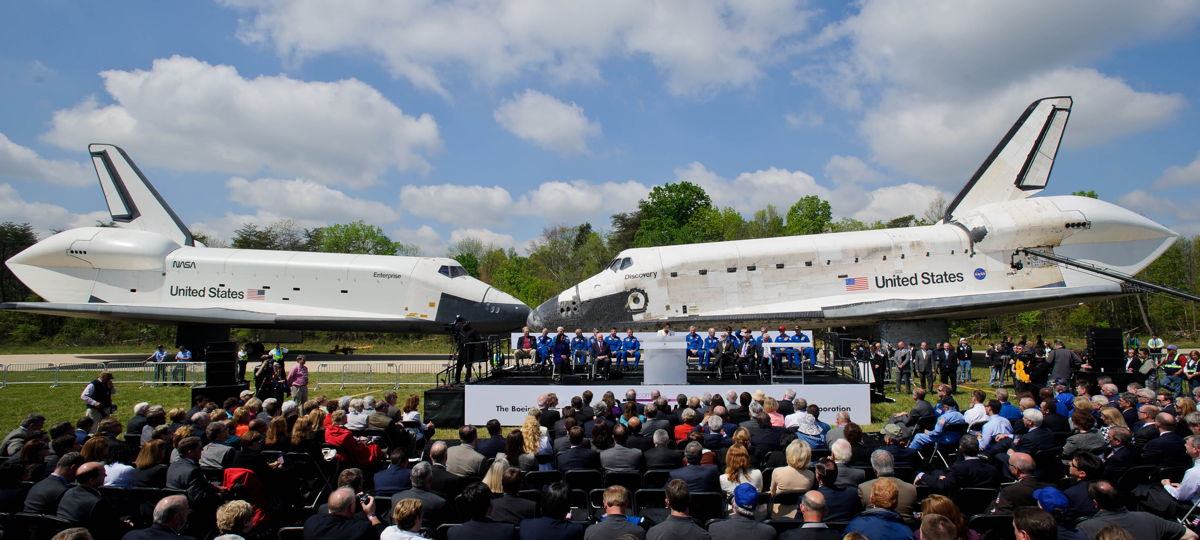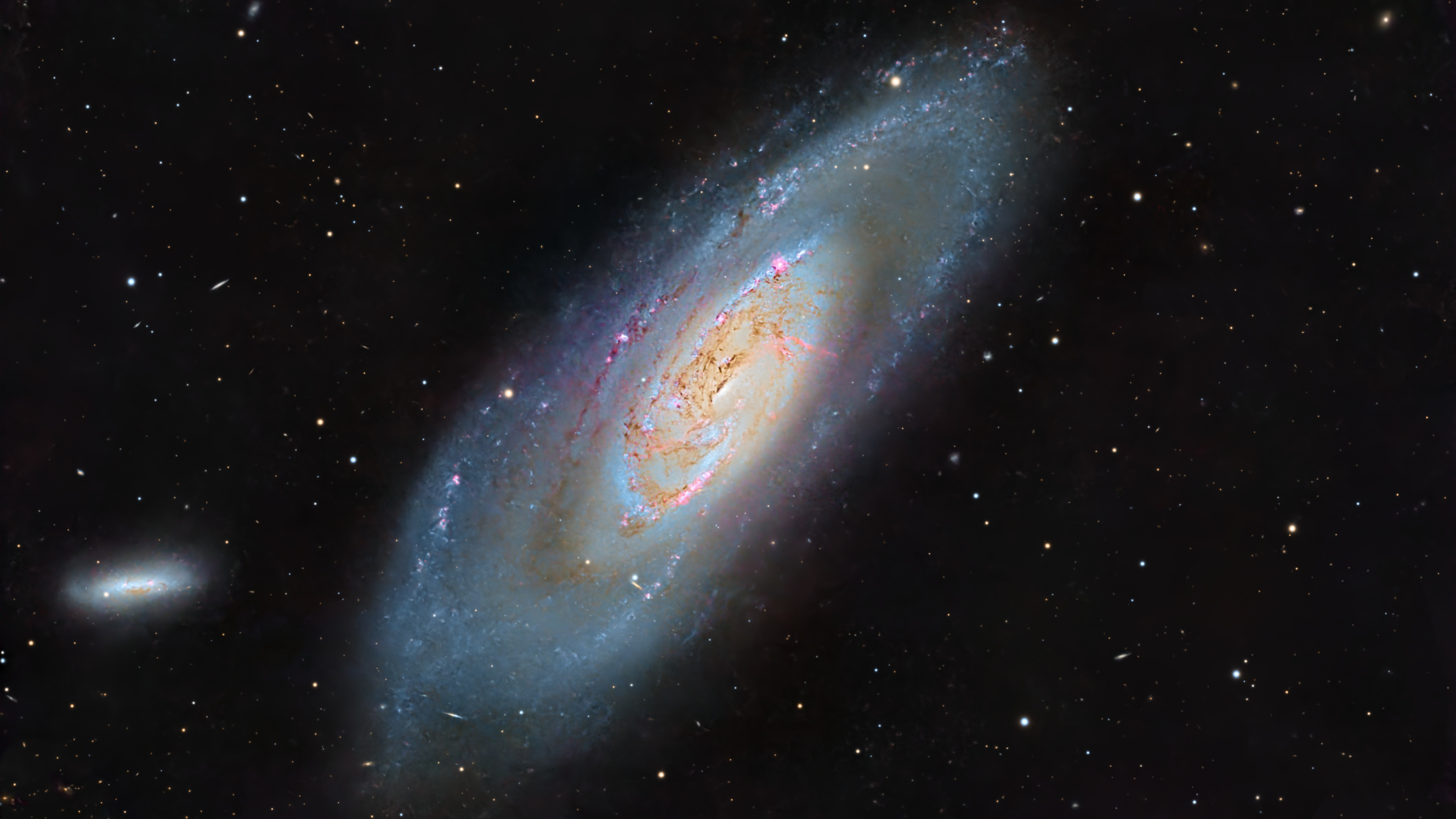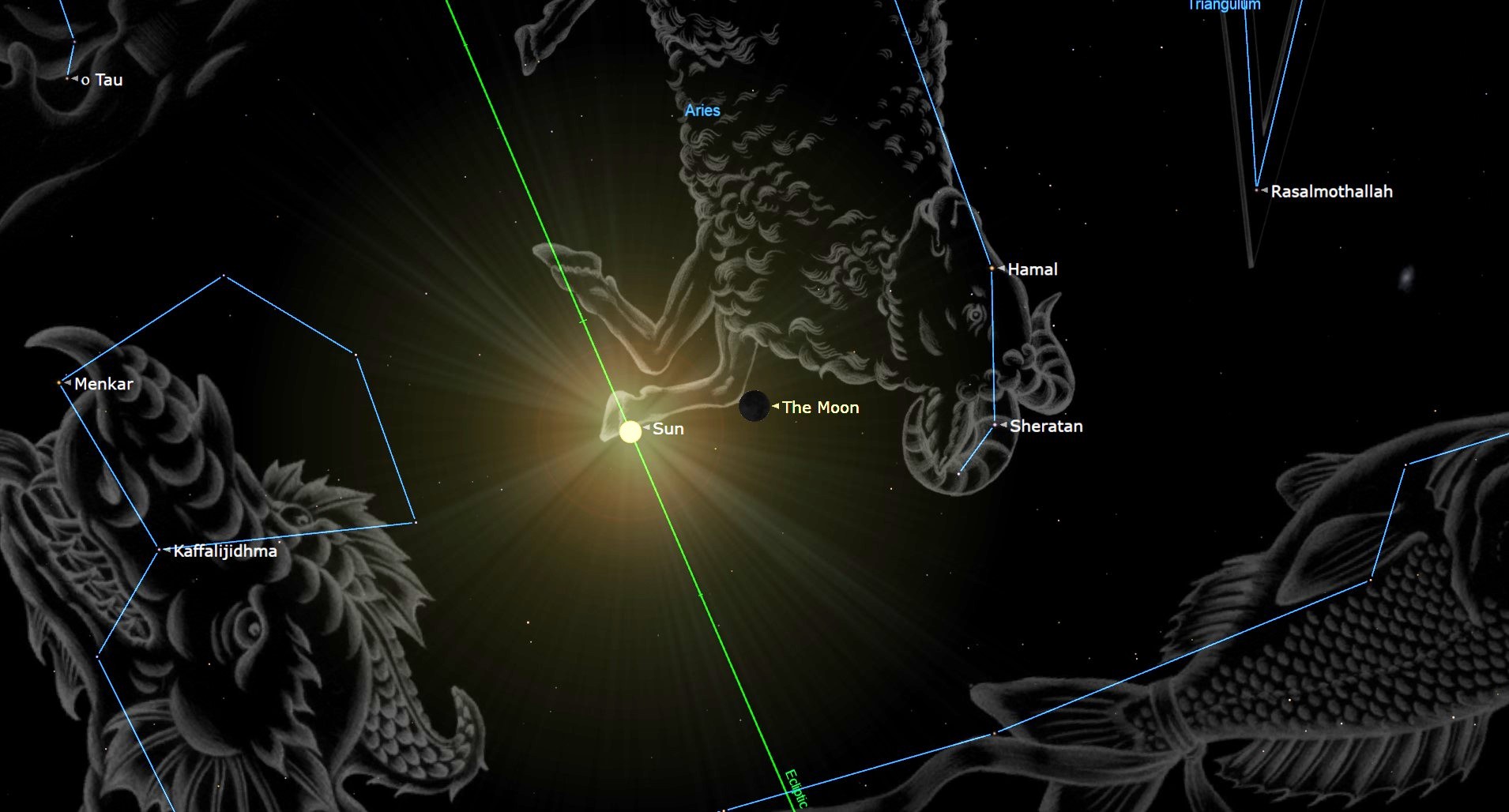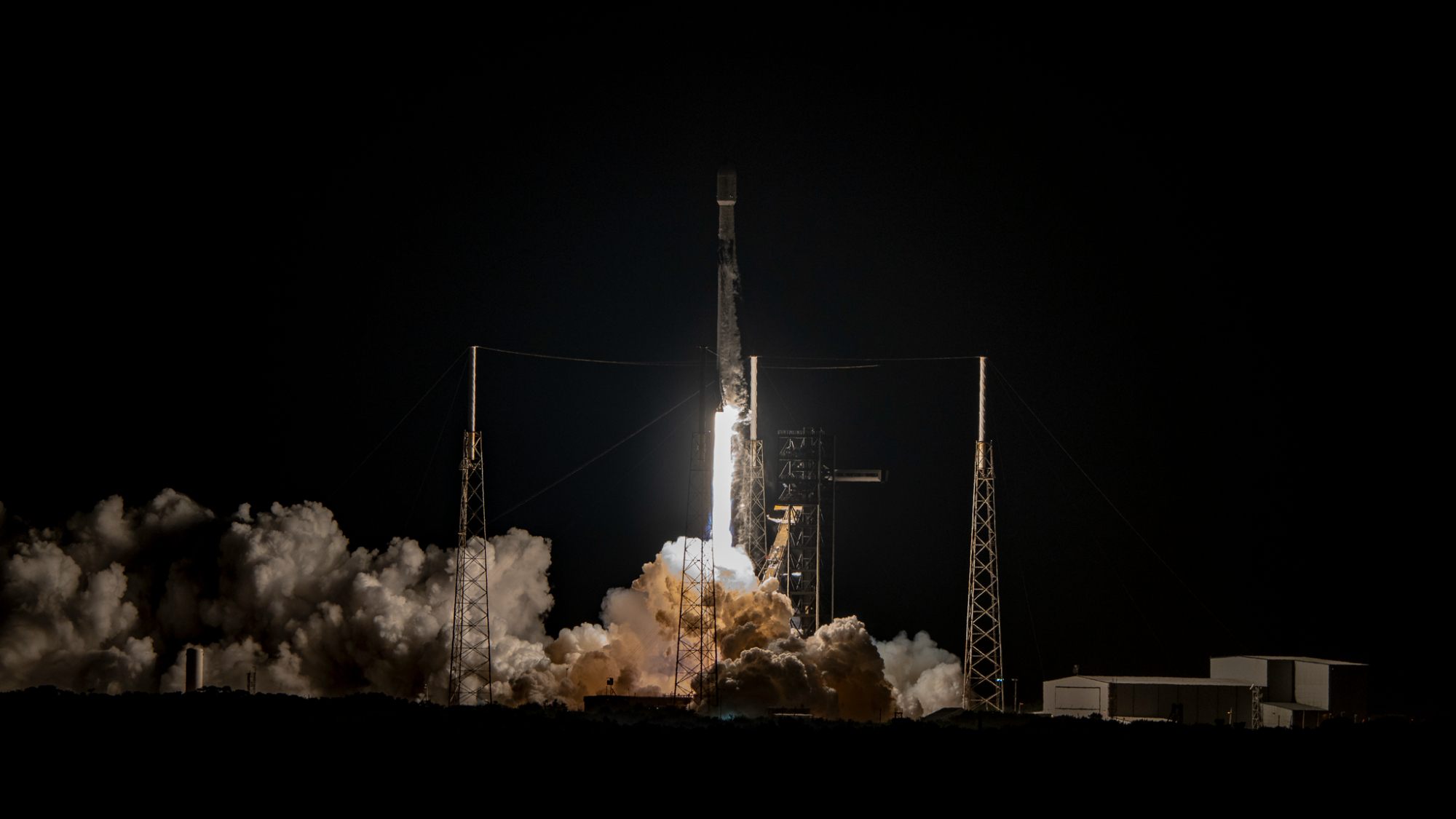Space Shuttle Discovery Enters Smithsonian for Museum Display

CHANTILLY, Va. — NASA officially delivered the space shuttle Discovery, its longest serving crewed spacecraft, to the Smithsonian's National Air and Space Museum on Thursday (April 19) during a public ceremony to hand over the iconic winged spacecraft.
The title transfer, which was witnessed by more than two dozen astronauts who flew on Discovery over the course of its 39 missions and more than 365 days in space, kicked off a four-day festival celebrating the retired orbiter's induction into the national aerospace collection at the space museum's Steven F. Udvar-Hazy Center.
"NASA and the Smithsonian signed an agreement in 1967 that has enabled the National Air and Space Museum to preserve and display the greatest icons of our nation's space history," said Gen. J.R. "Jack" Dailey, director of the museum, in a statement released Monday. "At the Udvar-Hazy Center, Discovery will be seen by millions of people in the coming years, especially children, who will become the next generation of scientists, engineers, researchers and explorers."
Discovery came to the Udvar-Hazy Center by the way of a ferry flight from the Kennedy Space Center in Florida on Monday (April 17). The winged orbiter landed at Washington Dulles International Airport mounted atop NASA's Shuttle Carrier Aircraft, a modified Boeing 747 jumbo jet. Before touching down, the air- and spacecraft duo performed an historic flyover of Washington, D.C. and many of its landmarks. [Photos: Shuttle Discovery Flies to Smithsonian]
Discovery in, Enterprise out
Rolling up to the Udvar-Hazy Center on Thursday morning, Discovery was parked for the ceremony opposite the orbiter that made its own spaceflights possible.
Enterprise, a prototype shuttle that never flew in space but completed a series of critical approach and landing test flights in the late 1970s, had been part of the National Air and Space Museum's collection since 1985. In December 2003, it went on display inside the Udvar-Hazy Center's McDonnell Space Hangar as its centerpiece.
Get the Space.com Newsletter
Breaking space news, the latest updates on rocket launches, skywatching events and more!
To make room for Discovery, the Smithsonian returned ownership of Enterprise to NASA in 2011. The space agency, in turn, awarded the test orbiter to the Intrepid Sea, Air and Space Museum, a converted World War II aircraft carrier berthed along the Hudson River in New York City.
On Thursday, Enterprise was rolled out of the museum's hangar and displayed with Discovery nose-to-nose.
The two spaceships were then to part ways — Discovery entering the Udvar-Hazy Center for display by day's end and Enterprise heading off to an adjacent airport apron to be mated with the Shuttle Carrier Aircraft.
Enterprise will be flown to New York's John F. Kennedy (JFK) International Airport on Monday (April 23), weather permitting.
Stand-out space shuttle
"As part of the Smithsonian collection, Discovery will bring a richer perspective to the historical and scientific significance of the space shuttle program, one of our country's greatest achievements," Wayne Clough, Secretary of the Smithsonian, said in a statement.
Discovery was the first of three orbiters retired from NASA's shuttle fleet. Its final mission, STS-133, launched Feb. 24, 2011, and landed March 9.
It completed 39 missions, spent 365 days in space, orbited the Earth 5,830 times and traveled 148,221,675 miles.
Discovery was the third of NASA's orbiters to fly. A number of its missions were associated with technological and scientific achievements, including the launch of the Hubble Space Telescope into orbit in 1990 and the deployment of the Ulysses solar probe the same year.
The fleet leader, Discovery also returned the space shuttle program to flight after the losses of Challenger and Columbia in 1986 and 2003, respectively.
Discovery was the first space shuttle to visit the International Space Station and delivered its largest laboratory. The orbiter was flown by the first African American commander, Frederick Gregory, and the first U.S. female pilot, Eileen Collins, as well as by Mercury astronaut and Senator John Glenn, who at 77 returned to orbit aboard Discovery as the oldest person to fly in space.
Visit shuttles.collectspace.com for continuing coverage of the delivery and display of NASA's retired space shuttles.
Follow collectSPACE on Facebook and Twitter @collectSPACE and editor Robert Pearlman @robertpearlman. Copyright 2012 collectSPACE.com. All rights reserved.
Join our Space Forums to keep talking space on the latest missions, night sky and more! And if you have a news tip, correction or comment, let us know at: community@space.com.

Robert Pearlman is a space historian, journalist and the founder and editor of collectSPACE.com, a daily news publication and community devoted to space history with a particular focus on how and where space exploration intersects with pop culture. Pearlman is also a contributing writer for Space.com and co-author of "Space Stations: The Art, Science, and Reality of Working in Space” published by Smithsonian Books in 2018.In 2009, he was inducted into the U.S. Space Camp Hall of Fame in Huntsville, Alabama. In 2021, he was honored by the American Astronautical Society with the Ordway Award for Sustained Excellence in Spaceflight History. In 2023, the National Space Club Florida Committee recognized Pearlman with the Kolcum News and Communications Award for excellence in telling the space story along the Space Coast and throughout the world.










